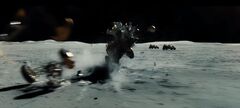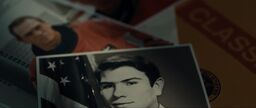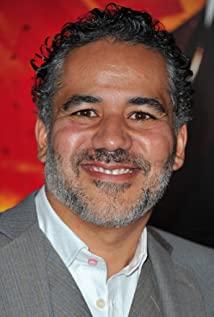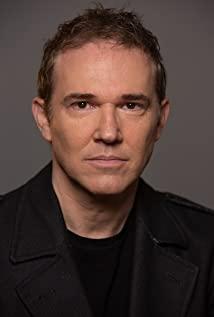Translator: Four Wrinkles Yin
Collection of interviews with director James Gray and NASA experts (long warning)
James Gray started writing the script of "Interstellar Exploration" with Ethan Gros in 2011. It took most of his time in the past ten years, and their initial frame length was no more than two hours. The themes of his most recent movies have revolved around people venturing to fabulous places and healing their hearts. Gray painted each film with a classic finish to blur the sense of opposition that they produced together: the larger his film, the deeper he explores the most fundamental things in human experience.
The movie was delayed several times, various rumors, what happened?
There are many reasons. On the one hand, the technology involved in making such a movie is very complicated, and the picture editing itself is difficult. The structure is very simple, but it is difficult to make a large number of visual effects in the world. You have to take this kind of photo again, draw the animation, render it, and then cut it into a good photo. If it is not suitable, it needs to be remade. The process is endless.
On the other hand, this studio has been acquired by another studio. Disney bought this studio (Fox) and was unable to release two self-produced movies at the same time. In fact, I am very happy because I think this movie will be released better in the fall, so that I have more time to make special effects...
The cost of "Interstellar Exploration" is the sum of your past movie costs. With such a large budget, do you have the final editing rights?
I do not have. With such a budget, few directors have the final editing rights. But the main patron of this film is Anon Mirkan (Israeli billionaire and founder of the Regent), who supports the creation of art of all sizes. The first movie that Arnoen participated in was Sergio Leone's "Once Upon a Time in America", the second movie was "The King of Comedy", and the third was "Wonderful Fantasy"... He knew that adventure means what. They didn't let me add stupid things to commercialize the film. Brad and I tried to stay true to our ideas in every process of shooting.
Is there no compulsory compromise with regard to the risks the studio takes?
This is indeed very common in today's profit-only environment. But if you work with an actor as influential as Brad Pitt, you know he is there, either for debate and opinion, or to help improve your situation. This movie has compromises, but considering its size, there are very few compromises. It is very lucky to make a movie with someone who has a common language with you. The last 40 seconds of the movie are not mine, but my ending is in the movie.
Nowadays, with the development of space movies, many scientific researches on space movies have appeared. Are you the same?
Yes, we started talking with space experts that we could reach, and even had dinner with the astronauts at home. I really like this research. Many of our scenes did not use the green screen, but were shot in real scene. We filmed the moon and Mars passages in the desert, but when I watched the video, I had a heart attack because there were more vegetation and life in the desert than expected, and it didn't look like the moon or Mars. So I said, "What should we do?" The Jet Propulsion Laboratory (JPL) provided high-resolution images of the Moon and Mars. Therefore, the earth's surface in the movie is the moon and Mars. You are basically watching the first movie shot on Mars!
But I still got something wrong, because the science will be updated. For example, one must travel to Mars via the moon. Why? Because the gravity of the moon is one-sixth of that of the earth, the thrust required to leave the moon's orbit is much smaller than that of the earth, and there is no need to use a large rocket. No excessive fuel is needed. So when they go to Mars they will use the "gateway", which is located in the "relatively loose orbit" of the moon. What I am mistaken is that they will launch from the lunar orbit instead of the lunar surface.
We also make aesthetic interpretations of many of the scientific principles they described. What's the meaning? If you go to Mars, they say that most of the settlements are underground. The reason is obvious. They think there are lava tunnels underground, which are ready-made dwellings. Our production design needs to consider corridors and tunnels. Now, what lamp do you use? What is the best way to preserve the emotional core? Well, fluorescent lights tend to be cool green, so warm light may be chosen. So we started to use very warm light as illumination on Mars. As you can see.
We did not strictly follow science. What we pursue is rationality rather than complete realism. You can study Buzz Aldrin's paper on Orbital Mechanics, but in the end, you know it is to forget it.
The color scheme of many scenes in this movie is very bold
We think about color matching like painters . We have delved into-it sounds contrived-what is called a color symbol. You might say it is not true. This color scheme is to track Roy's emotional experience, and we think it can enhance the subjectivity of the experience.
Neptune is dark blue, so we use light blue indoors, and the hazy orange-yellow indoors on Mars. This is to remind the audience which planet they are on and where they are in the solar system-from warm to cold. We pay much attention to the actual light source, and don't worry about overexposure of one scene and normal exposure of another part. Imperfect photography is more realistic.
So Hoyt van Hootma was appointed as the photographer?
Producer Emma Thomas recommended him. I want to find someone who understands technology and assume zero gravity. Hoyt is also an engineer-an amazing artist who understands how to make scenes, how to shoot, and how to create effects.
Brad Pitt did a great job in the movie. How did you think of him as Roy?
Roy is very vulnerable. He is like an underage boy. Brad is a legendary movie star, he can give this weakness a bit of subversiveness, because people only want him to take off his shirt (really take off). It would be fun if I let Wallace Sean play an astronaut. This script is very suitable for comedy, but it will not subvert our view of masculinity. What I need is an actor who can pierce the existing myth of masculinity. It takes courage to throw yourself into the distant space like a rock. But facing inner conflicts and embracing certain parts of oneself (humans are used to let oneself ignore it) require another kind of courage. Myths must be broken by myths, and Brad is the most suitable candidate.
I don't know if this was intentional, but I noticed that "Interstellar Exploration" opens with a reversal at the end of "2001: A Space Odyssey". The first picture is Brad Pitt wearing a helmet, almost identical to the outfit of the star boy in the final scene of "2001: A Space Odyssey". Then the picture shifts to the earth, which is exactly the opposite of Kubrick's shooting method. Can't help but make me think, am I watching Xingtong become a sad middle-aged man step by step?
This is totally unexpected! I never thought about it. Wow, that's weird. No, I used the image of Brad in the opening remarks. I wanted to imply that it was like a dream he had, and let the audience understand that this is a myth of man, not a myth of God.
So, in this sense, it is actually the opposite of "2001: A Space Odyssey", isn't it?
In the past six weeks, many people asked me questions about "2001: A Space Odyssey." This is one of the five favorite movies in my life. In "2001: A Space Odyssey", the apes touch the black boulder. What it really wants to share with "Interstellar Exploration" is to look at the desire for the near future with an unbiased perspective. This is not fantasy but science fiction, or quasi-scientific fact. But if you look at this story, there is no similarity. "2001: A Space Odyssey" is not a human myth, because you don't know Kyle Dura at all. In fact, you will feel that Hal (computer) is very kind, and you will feel sad for Cyclops. It can be seen that Kubrick tried to persist in the creation of mythological themes-just like many filmmakers in the 1960s found Joseph Campbell's book "Hero with a Thousand Faces"-people feel that they have not achieved greater success in a certain field, so Turn the movie into a more abstract myth with gods. The work shines with the brilliance of genius, and the flaws become advantages. We tried to consciously do the opposite of "2001: A Space Odyssey"-from the perspective of Telemakos, Odysseus walked for 20 years, leaving his son to live alone. Kubrick talked about aliens, are they good or bad? We try to express "there is nothing outside, mankind is everything to us. Don't look for a false god in the universe. The little green man will not come here to save us".
Speaking of which, I like the little hint about the dystopian world that you added in "Interstellar Exploration." For example, Brad Pitt is a veteran of the Arctic Circle War.
The whole theme on the moon is about this, and baboons. There are a few basic truths about human nature. I am a believer in progress, but if you have to draw it, it will probably look like this [hands up and down zigzag movements]. It is not a steady upward line. Our life now is better than 1300 years ago, when people were worried about the Black Death, and ordinary people may only live to about 28 years old. Life is better now. However, hundreds of wars broke out at a certain point in time. This shows what? The core part of our nature has some bad aspects, and it is always with us.
So when we colonize the moon, will lunar pirates really appear?
Think about this logic: you need to eat on the moon, right? You can't eat beef, and the moon can't graze. The gravity of the moon is one-sixth of the gravity of the earth. Can vegetables and fruits be grown on such a land? Ask yourself, what is on the moon? Mainly processed food and artificial meat, as well as fast food. A large part of the moon may be rich in natural resources, but in which country, ethnicity and region? Then, if you find abundant natural resources in one area that are not available in other areas, what would you do? You may have brought an international treaty, but how to implement it? Therefore, there is a basic core truth about the situation on the moon and our identity. How to bridge the gap? We try to convey this inevitability.
This is also mentioned in Roy's journey, right? He will count the death toll everywhere
He is an angel of death! He witnessed the death of all crew members.
Although this movie is pessimistic about life in outer space, it calls on you to cherish everything around you on earth
It sounds old-fashioned, but isn't it true? It is very possible that there will be extraterrestrial life, but we have been sending signals to the universe since the 1960s, and we haven't heard anything. There is a term called "Fermi Paradox"-if extraterrestrial life is abundant, why should they remain silent? Well, this means we can't communicate with it. If we can't communicate with it, we can't meet them in our limited lives, so what are they? Regardless of the purpose, it doesn't matter whether there are people on RU72V98 or other planets 200 light-years away. Who cares about this? You cannot communicate with them because it is too far away. So what is the answer? It's not about being alone, it's not about communicating. It was because my son showed me a praying mantis on a leaf. Thank your wife and children for finding beauty in life. This sounds old-fashioned, isn't this everything we have? What else? It seems that anything else is just a projection of fantasy, and you may get lost in it. This is a kind of interference. I kind of like the human species. Despite our flaws and mistakes, I am very happy to be a human being.
Last question, who do you want to thank?
There is only one name to be thanked for: Tracy K. Smith, the author of "Life on Mars", won the Pulitzer Prize, a collection of poems about mourning her father and gazing at the midnight sky. In the poem "God Is All Over the Stars", the author wrote: Maybe it's more like living in the deep sea: silence, good mood, strange kindness, ancient pattern.
Tracy's wording changes are incredible. In my correspondence with her, I studied her straightforward and poetic language style and integrated it into Roy's large monologue.
Robert Youwell, a 30-year senior engineer with NASA and SpaceX
As one of the consultants of this film, who do you work with?
Director James Gray himself and the art department staff. James regularly asks me for advice before filming, before production, and during filming. In many shots, such as when taking off from the moon and landing on Mars, I was really sitting next to him, and I was listening to the lines with headphones on. James will turn around and say: Is this right? Does this look okay? What shall we do here? Then I will make suggestions, when Brad has to take over from the panicked guy, what should he say...
What is the deepest impression left by the director?
He will try to explore physics from a realistic perspective. For example:'Can you shoot on the moon? 'The answer is yes, a standard gun can be used normally in space, and the bullet has its own combustion-supporting agent.
Another question is,'Can you talk to someone on Neptune in real time from Earth? 'Unfortunately, you can't. As far as we know, the speed of light is the speed of light, so you have a considerable delay.
'What does blood look like in zero gravity? What would a dead person look like in space? 'These are creepy things, but one day someone will have to face these unexpected events. Yes, these things are in the realm of physics. He also raised questions about nuclear and gamma-ray radiation, neutron radiation, matter and antimatter. Our conversations are always very interesting, and his questions are very thoughtful.
"Interstellar Exploration" describes a future of uncertain time, when commercial travel to the moon is possible, and the United States has a center on Mars. Have you considered any special dates?
I think it will be about forty to fifty years from now, almost like this. But I can also say the opposite. I think this is what James wants. The way of shooting has a retro feel, a bit deliberate. Many people will look at the spacecraft and say, wait, why not let the computer do this? But my argument is, look at the U.S. Air Force today: We are still flying the B52 bomber-the pilot’s great-grandfather had flew it in the 1950s. If you have something reliable and it works, then don't fool around. This is part of the theory behind some of the phenomena you see in the spacecraft you are describing.
Are there any surprises in the final clip?
To my surprise, I did not expect it to portray so well. In the microgravity scene, you can see small drops of water floating on the water. This looks pretty cool. I think the only other movie that really shows this is "Apollo 13". When shooting that movie 25 years ago, they actually had to use NASA's aircraft, which can fly in zero gravity and shoot with the actors every 30 seconds, which is a very complicated matter. Now we use CGI technology and other means, you can create miracles on the screen.
Some people insist on facts more than others. This is what makes "Interstellar Exploration" unique, James Gray has a strong pursuit of science. I hope this movie can inspire a new generation to become more active in the fields of science and engineering, just as the movie "2001: A Space Odyssey" inspired me.
In order to make people interested in space, have you distinguished more tentative movies like "2001: A Space Odyssey" from more historical movies?
This is necessary because you have to reflect the future and be optimistic. Test is very important. Look at Stanley Kubrick, who filmed "2001 A Space Odyssey" in 1966. He basically predicted the iPad. It's incredible! This is exactly what you see in the movie. Bowman and other astronauts are sitting on Discovery, and they are watching BBC news on an iPad. Inspired by Steve Jobs, I think it can be said that this movie did it, which is why we have an iPad today. Before the movie were books, such as Jules Verne's works, which inspired real engineers and real scientists to come up with the inventions and discoveries they eventually made.
Garrett Reisman, a retired NASA astronaut, flew to the International Space Station for two space missions between 2008 and 2010
I heard that you participated in the script modification?
Many of us are now considering creating a sustainable environment for humans on another planet in our solar system, especially the red planet Mars, and think that it is a beautiful utopia. I think we must consider: What if it turns out that this is not a utopia? What if it is dystopia? If we can use rockets to break the bondage of gravity and use advanced technology to transport humans to another planet, but will our human weaknesses accompany us? What if the result is not good? In this movie, Gray explores this issue.
During the filming, did you also visit the scene in person?
Yes, help ensure that the space flight depicted in the movie is as accurate as possible. However, the story is the priority. In the final analysis, this film is not intended to be a documentary. It must have a certain artistic exception to increase the drama.
For example, at the final critical moment of the film, the character played by Pete shed tears, and the tears will not fall in space, which violates the law of zero gravity. Gray decided to keep Pete's tears on the grounds of being artistically unconventional. He said to Pete at the scene, "I'm sorry, I kept this scene. Man, your acting is so good."
The space travel tools and technology that this movie relies on are beyond our current level, but as you would expect in a science fiction movie, it is still within the scope of potential viability. The feeling of riding in a car or spacewalk in a microgravity environment depicted in the movie is very real, because I have done these two things myself.
Apart from that, what other experience did you provide?
Expertise in dealing with interpersonal issues in space. I mentioned two things when I talked to Gray. In a long expedition, the worst thing is conceit and incompetence... These two things will destroy the cohesion of the crew.
Guy Creech, senior scientist at Lockheed Martin
What made you become a consultant for this film?
They are very interested in science and want to know how everything is going on. They are truly visual people, and this is the language that resonates with us. We showed them some photos and videos of Apollo, some photos and videos of astronauts falling on the moon.
The types of vehicles and rockets that appear in the film are what our company is studying. So when you see the words "Lockheed Martin" appearing on the side of the spacecraft, it will send out a message about progress and where we want to go.
In addition to the LOGO, some of Cepheus’ designs imitated Lockheed’s proposal for the Mars base camp, which is a building that transfers astronauts from the moon to Mars.
We also talked about everything from nuclear technology to space elevators to lunar rover.
Mike Massimino, active NASA astronaut
In the film, Roy has a device that can help him perform psychological evaluation. What do you think of this element?
If we are to perform such a task and walk such a long way, it is necessary. People as far away as the earth may need a very strong mental state. They need to be prepared to reach their limits physically and mentally. I can see that in the future we use such technology to evaluate a person's mental state and how they respond to these problems.
What do you think of the series of plots after the mission started?
In the scene when they landed on Mars, there was a person on a mission who didn't know what he was doing, and then they had to take over. I think the role played by Brad at the time performed the right process, giving his colleagues the opportunity to correct themselves and then take over at the right time. This is how I hope to perform in similar situations. Regarding the direction of things, I think they have a good idea. During your journey, you will experience zero gravity, just like any trip to the moon, unless you want to create gravity on the spacecraft through artificial design. Once you are under the influence of gravity or in a place like Jupiter, there will be a lot of gravity there. I think they described it very accurately.
Psychologically, what do you think is going to happen to the edge of the solar system?
One element of this movie that really moved me was the concept of other life in the universe. I always thought we could find something, but he didn't find anything, which is even more terrifying to me. When it is mentioned in the movie that some people who have gone so far want to go back, I think it makes a lot of sense, and in my opinion it is right. This is why communication with your family is so important when you are outside.
PS: The achievements in the history of space exploration embodied in "Interstellar Exploration" include
When Roy was sitting at a conference table explaining his new mission, behind him was a row of models of rockets and spacecraft. These small models include the Gemini Titan II rocket, the Saturn V rocket with the gantry tower and launch platform, the Mercury capsule and China's Shenzhou manned spacecraft.
Recognizable in the hallway of the Hall of Fame are Apollo 11 crewmembers Buzz Aldrin and Michael Collins; Irene Collins, the first woman to perform the space shuttle mission; and May Jamison, the first African American women flying in space; Bruce McCandless, the first astronaut to perform a tetherless spacewalk.
Roy traveled to the moon by Virgin Atlantic commercial transportation. Virgin Galactic, another division of Richard Branson, is approaching paying passengers for suborbital flights.
On the way to the moon, a scrolling label on the in-flight entertainment system showed that the first moon landing was in December 1968, referring to NASA’s Apollo 8 mission.
Pruitt (Donald Sutherland), a retired astronaut, told Roy that he and Roy's father had studied at Purdue University. This university has trained more than two dozen astronauts, including the first and the last (so far) to walk on the moon, namely Neil Armstrong and Eugene Cernan.
The Lunar Rover is derived from the evolution of the Apollo Lunar Rover (LRV), including its mesh-style seats and bronze fenders.
Cepheus’ cockpit borrows components from NASA’s space shuttle flight deck, including a data entry keyboard and digital timers fixed behind the driver’s and pilot’s seats.
The interior of other spacecraft, including the design of the Lima project, borrowed from the appearance of the International Space Station, including some of its hardware.
"The planting technology used to provide fresh food for the protagonist in the film originated from SNC's VEGGIE system, which has been equipped on the space station to provide NASA astronauts with planted plants." Sierra Nevada Corporation (SNC) wrote on Twitter.
The sound material created by the composer Max Richter includes sounds produced by data from the two Voyager planetary probes. This was done to reflect the true location of Roy's flight with the original sound in the movie.
View more about Ad Astra reviews











